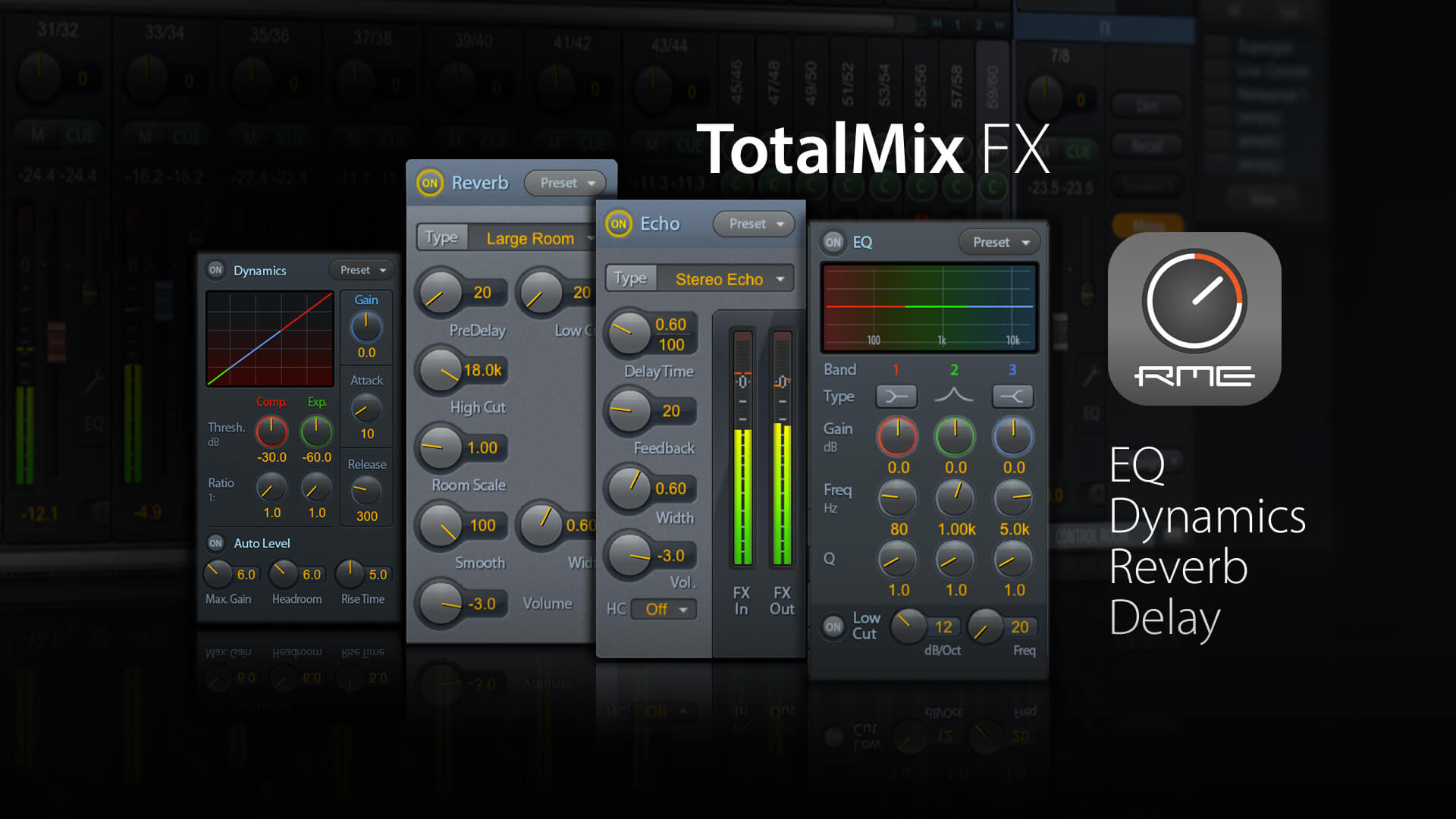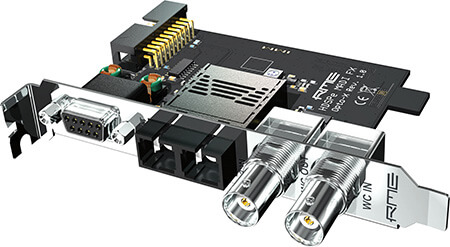RME – HDSPe MADI FX – כרטיס קול פנימי
כרטיס MADI PCI Express משולש 390 ערוצים
| יצרן | |
|---|---|
| סדרה | |
| חיבור למחשב |
₪ 7,300
ASK AN EXPERT
המומחים המוכשרים שלנו מוכנים לעזור!
תמיכה טכנית
כל מה שצריך לחוויה מושלמת!
משלוחים
צרו איתנו קשר למשלוח לכל חלקי הארץ!
מדובר בפיתוח חדשני של מנוע ה-Hammerfall המסוגל לעבד ערוצים במהירות של פי שלשה
מכל ממשק MADI קודם. כאן נכנס לתמונה ממשק המשתמש המלווה טכנולוגיה כזו,
גרסה מיוחדת של ה-TotalMix FX המאפשרת לכמות עצומה של ערוצים להיות נשלטת בצורה יעילה
ועם מעבד אות DSP מהיר. עם עכבת נמוכה לבקרה ישירה של האות כולל אפקטים,
ניתוב המוגבל לדימיון בלבד, עמידות בכשל כניסות כדי לאפשר אודיו חלק ורצוף,
הוא אטרקטיבי בצורה יוצאת מן הכלל מגוון יישומים תובעניים הדורשים אמינות רבה.
The 192 kHz RME effects engine allows latency-free monitoring with numerous effects like EQs, Compressors, Reverb, and Echo rendered directly on the hardware of the card, independent from the DAW software in use.
The integrated TotalMix matrix conveniently allows the use of the card as powerful MADI router. Unlike most other router solutions, each channel can be routed individually – even with separate level settings for each routing. The unparalleled flexibility of TotalMix can turn the most exotic applications into practical reality.
RME's unique Seamless Redundancy Operation uses the cards 3 MADI receivers to provide professional users with state-of-the-art fail safe operation. In SRO mode the card operates as single MADI input device, recording up to 64 channels. As soon as the current input fails the audio data received from one of the other two inputs is used. The audio data is not interrupted when switching to another input and the card can use not only one, but two more sources for redundancy. No reclocking and synchronization to a different clock source is required, and the interruption caused by the external failure is minimized to a few samples.
The card also features SteadyClock, RMEs active jitter suppression and the unique professional meter and analysis toolbox DIGICheck – including EBU R128 metering – as well as nearly identical operation of the card under Windows and Mac OS.
TotalMix FX includes a complete effects system: EQ, Reverb, Dynamics & Delay
3 x MADI I/O
The MADI FX provides two optical and one coaxial MADI I/O*. Thus a total of 192 inputs and 192 outputs are simultaneously available in MADI format (at 44.1 and 48 kHz). At 96 kHz there are 96/96, and at 192 kHz an impressive number of 48/48 inputs and outputs can be used.
The HDSP MADI FX provides a sufficient amount of audio channels for every conceivable project, and enough reserve to grow with future needs. In general, two optical MADI-I/Os are adequate to implement a major studio or live setup with long cable lengths. The additional coaxial MADI I/O provides maximum flexibility and provides in-the-box conversion between both formats.
* The optical connectors are SC industry standard, in multi-mode technology. The coaxial MADI I/O is configured as 75 ohm BNC.
Analog Monitoring Output
The HDSPe MADI FX provides an analog stereo output in reference quality with RME's proven low-latency converter technology. The output is ideally suited for high- and low-impedance headphones.
Thanks to the powerful monitoring features of TotalMix, any input channel, recorded tracks, or complex sub-mixes can be selected for listening. An advanced Cue function allows each of the 98 possible stereo sub-mixes to be monitored with just a single mouse click.
AES/EBU I/O
An audio interface which is limited to MADI I/Os needs expensive multichannel converters to perform a conversion to other digital formats or even a simple sync connection. Those who work with MADI usually have also AES/EBU devices in use and would like to connect them easily to their DAW.
Therefore the HDSPe MADI FX provides a digital I/O in the professional AES/EBU format. This allows the connection of a simple AD/DA converter (e. g. RMEs ADI-2 for example) to get a 2nd monitoring output, or to create a talkback setup. Even the connection of an external digital effects unit without a costly external MADI to AES/EBU interface can be realized easily.
The AES/EBU I/O can also be used for synchronization, e. g. with Steinberg's synchronizer and clock device, the Nuendo Sync Station.
MIDI integration and remote control
The HDSPe MADI provides four MIDI I/Os:
– 1 x external via breakout cable
– 3 x internal as virtual MIDI ports – one for each MADI I/O
RME MADI devices will not only transmit 64 audio channels with a single connection, but also regular MIDI signals. The HDSPe MADI FX is no exception: each MADI I/O owns a virtual MIDI I/O in the operating system that can be addressed by any MIDI program.
MIDI signals will be transmitted invisibly through the same lines and distances as the MADI data. At the other end of the MADI cable, the MIDI signals can be played back from RME MADI devices via a standard MIDI DIN port.
MIDI over MADI also allows remote control of all RME MADI devices, including monitoring and configuring a device's complete status. This outstanding feature makes MADI transmission across large distances practically usable, with host computers and devices far from each other – for example, FOH and stage.
All units can be programmed with their own ID, allowing independent remote control of multiple devices via a single MIDI channel.
RME provides a free Windows and Mac software to control all RME MADI devices. This MIDI Remote can use any existing MIDI port within the system to remotely control and monitor all connected devices. The software provides both a front-panel like operation and an extended Matrix display.
Wordclock I/O
A word clock I/O with switchable termination completes the connectivity of the MADI FX card. While most MADI-based devices require an additional word clock or AES/EBU line, the MADI FX card uses SteadyClock to extract the reference clock directly from the MADI signal, while reducing possible jitter to a minimum, making long-distance connections even more convenient. The word clock input processes signals automatically in single, double or quad speed.



